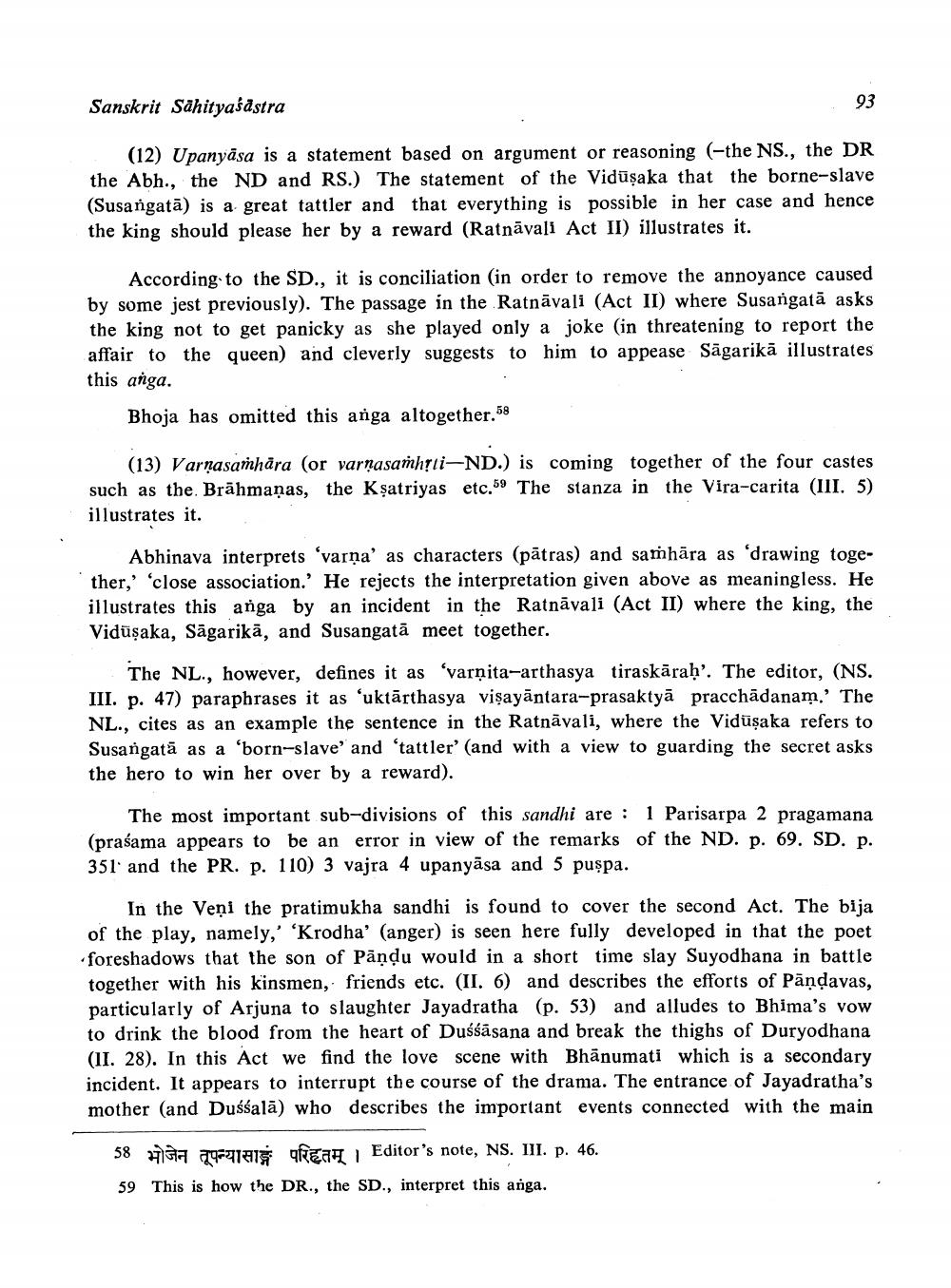________________
Sanskrit Sāhityaśāstra
93
(12) Upanyāsa is a statement based on argument or reasoning (-the NS., the DR the Abh., the ND and RS.) The statement of the Vidüşaka that the borne-slave (Susangatā) is a great tattler and that everything is possible in her case and hence the king should please her by a reward (Ratnāyali Act II) illustrates it.
According to the SD., it is conciliation in order to remove the annoyance caused by some jest previously). The passage in the Ratnāvali (Act II) where Susangatā asks the king not to get panicky as she played only a joke (in threatening to report the affair to the queen) and cleverly suggests to him to appease Sāgarikā illustrates this anga.
Bhoja has omitted this anga altogether.58
(13) Varnasamhāra (or varnasamhțli-ND.) is coming together of the four castes such as the Brāhmaṇas, the Kşatriyas etc.59 The stanza in the Vira-carita (III. 5) illustrates it.
Abhinava interprets 'varna' as characters (pātras) and samhāra as drawing together,' 'close association.' He rejects the interpretation given above as meaningless. He illustrates this anga by an incident in the Ratnāvali (Act II) where the king, the Vidüşaka, Sāgarikā, and Susangatā meet together.
The NL., however, defines it as 'varṇita-arthasya tiraskāraḥ'. The editor, (NS. III. p. 47) paraphrases it as 'uktārthasya vişayāntara-prasaktyā pracchādanam. The NL., cites as an example the sentence in the Ratnāvali, where the Vidüşaka refers to Susangatā as a 'born--slave' and 'tattler' (and with a view to guarding the secret asks the hero to win her over by a reward).
The most important sub-divisions of this sandhi are: 1 Parisarpa 2 pragamana (praśama appears to be an error in view of the remarks of the ND. p. 69. SD. p. 351' and the PR. p. 110) 3 vajra 4 upanyāsa and 5 puspa.
In the Veņi the pratimukha sandhi is found to cover the second Act. The bija of the play, namely,' 'Krodha' (anger) is seen here fully developed in that the poet foreshadows that the son of Pāņdu would in a short time slay Suyodhana in battle together with his kinsmen, friends etc. (II. 6) and describes the efforts of Pāņdavas, particularly of Arjuna to slaughter Jayadratha (p. 53) and alludes to Bhima's vow to drink the blood from the heart of Duśśāsana and break the thighs of Duryodhana (II. 28). In this Act we find the love scene with Bhānumati which is a secondary incident. It appears to interrupt the course of the drama. The entrance of Jayadratha's mother (and Duśśalā) who describes the important events connected with the main
58 59
159 1a feat | Editor's note, NS. III. p. 46. This is how the DR., the SD., interpret this anga.




